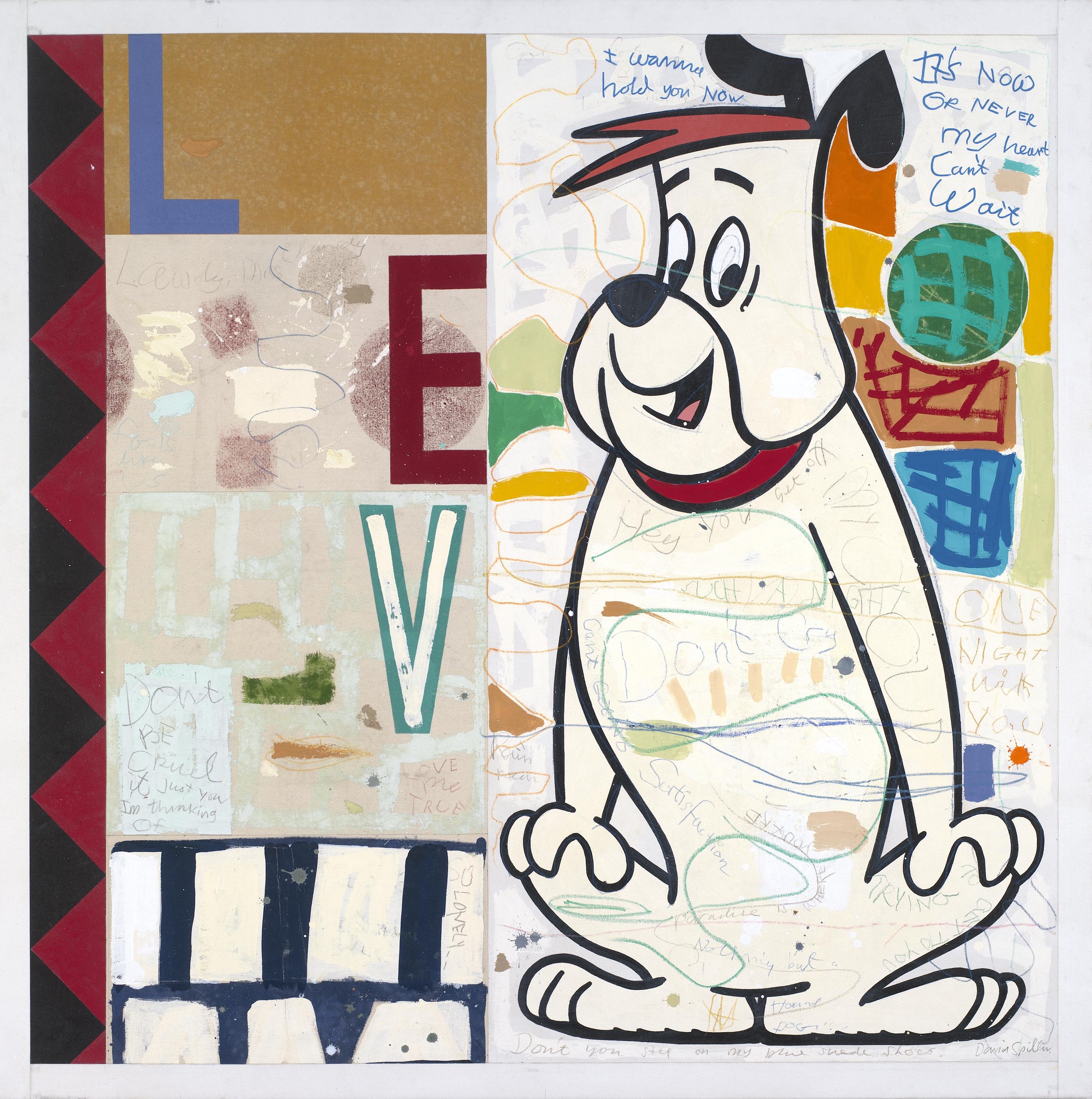Disguised as doodlings | David Spiller at the Portland Gallery
A visit to Cologne in 1985, to attend the Art Cologne Fair, proved to be a pivotal moment in the career of pop artist David Spiller.
Spiller was brought up in Swanley, Kent, and had studied under Frank Auerbach and William Coldstream at the Slade, where he won the Henry Tonks Prize for Drawing, but he had largely dedicated his time since graduating to teaching, at the Ravensbourne College of Art.
IT'S NOW OR NEVER, 2010, Acrylic & pencil on canvas, 148 x 148 cm, courtesy of Portland Gallery The mid-eighties was the heyday of the Cologne’s cultural boom; the city was seen as the European capital of contemporary art, umbilically linked with New York, spawning such talents as Albert Oehlen, Martin Kippenberger, Cosima von Bonin and Michael Krebber. The Fair was the event of the year, and Spiller was energised by what he saw: he immediately decided to give up teaching and dedicate all his time to his art.
In 1987 he moved to New York, where he enjoyed an exhibition in the Twinings Gallery in Broadway, and the Guy Pieters Gallery, which showed his work alongside that of Andy Warhol and Yves Klein; in 1988 he shifted his practice to Berlin, which led to an exhibition with the Zeitkunstgalerie at the 1988 edition of Art Cologne. These shows helped him develop an international reputation, and in a four-decade career, eventually working from a large studio in South London, he was given solo exhibitions in ten countries.
A work by David Spiller is instantly recognisable. Influenced by Picasso and Dubuffet, as much as Disney and Warhol, his canvases, stitched together by hand, display a smorgasbord of competing styles and techniques. They are usually dominated by a representation of a cartoon character – be it Mickey Mouse, Sylvester the Cat or Olive Oyl – and embellished with lyrics from his favourite pop bands, such as The Beatles, The Pogues and Bob Dylan, as well as his own philosophical musings. There’s an expressionist element to his pop art; complex abstract motifs, disguised as doodlings, demonstrate a deep knowledge of art history. The rich layering to his work demands close attention: these are pieces that are best seen in the flesh.
Spiller was something of an action man: his hobbies included motorcycling (notably down ‘Death Hill’ in Kent) and rock climbing; he proudly bore the scars of a Bren Gun bullet in his left shoulder after a shooting accident in the cadets. But his friends describe a deeply sensitive side to the man: the most common word used on his canvases is undoubtedly ‘love’. ‘I really want to make paintings that put some magic on the wall,’ he once stated. ‘Some are straightforward things, some are wild things. But underneath it says, “I love you”.’
Spiller’s estate is represented in the UK by Portland Gallery on Bennet St, St James, which is, from November 8 – December 1, showing the last of a trilogy of exhibitions of his work, this one dedicated to his output between 2010 and his death in 2018. You can be forgiven for not recognising the dog in the artwork chosen to illustrate this piece: it’s Reddy, from the short-lived Hanna-Barbera series Ruff and Reddy, which ran from 1957-60. The title, It’s Now or Never, of course, comes from Elvis Presley’s 1960 hit.

